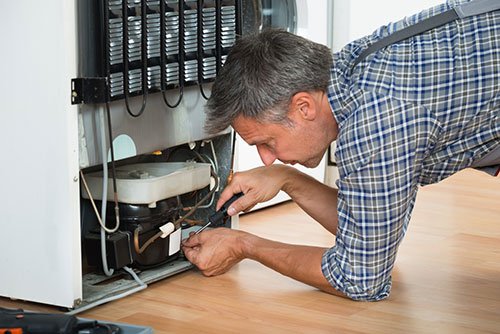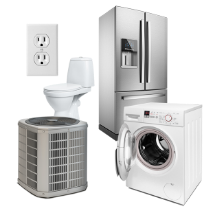Your refrigerator is a hard working appliance, but how much time do you spend making sure it operates smoothly? Here are some maintenance tips and tricks to avoid costly repairs and replacements to this important home appliance.
Clean the coils
Cleaning the condenser coils eliminates nearly three-quarters of service calls and can save you $5 to $10 a month in utility bills by allowing your fridge to run more efficiently.
Experts recommend cleaning the coils at least twice a year, but more often if you have pets that shed, since fur can clog the coils more quickly.
Depending on what type of fridge you have, the coils will be on the back of the fridge or at the bottom. To access coils at the back, pull the fridge away from the wall and give yourself room to reach them and do a thorough job. To access coils at the bottom, unsnap the grill plate at the base of the fridge.
To clean, use a coil cleaning brush, available at appliance parts stores or online, and a vacuum.
Note: for safety’s sake, make sure to unplug the fridge before you clean the coils.
Don’t skip the fan
If you have a fridge with condenser coils at the bottom, your model also likely includes a condenser fan (models with coils at the back don’t have fans). The fan circulates air over the coils to keep them cool, and can clog with debris such as dust, dirt and pet hair.
To clean the fan, use your coil cleaning brush and vacuum.
To access the fan, pull the fridge away from the wall and remove the lower back cover.
And again, make sure the fridge is unplugged before you begin. If you don’t open the doors, the food in the fridge will be fine for about four hours and the food in the freezer will be fine for a day or two, so either way you’ll long be done with the cleaning before you have to worry about spoilage.
Check those seals
The rubber seal, or gasket, that outlines your fridge and freezer doors is important to keeping it operating at key efficiency. The gasket seals out warm air and when it ages it can weaken. When it does, your fridge is working harder to keep food at the right temperature. In the long run, that overtime work might shorten the refrigerator’s lifespan.
If you spot tears in your gasket, replace it. Replacements are inexpensive and can save you much more money in the long run.
Defrost, defrost, defrost
When frost accumulates to a thickness of about a half an inch on the interior walls of the freezer, it’s time to defrost. To do so, remove the food and unplug the fridge. Let the frost melt and when it has done so completely, plug it back in and wait for it to reach the correct temperature before putting the food back in.
If you have a self-defrosting fridge, you don’t need to defrost, because the unit will take care of that for you. But whether your fridge defrosts itself for you or you do it yourself, you’ll need to clean the pan at the bottom into which water drains. Periodically emptying the pan will eliminate odors. To empty it, detach the grill/plate at the front of the bottom of the fridge and slide it out.
Set it right
Keeping your fridge at the right temperature will help it keep running right. Read your manufacturer’s recommendations for specifications, but a good guideline is keeping the fridge at a temp between 37 and 40 degrees Fahrenheit and the freezer at 0 degrees.
Keep it full
A well-stocked fridge won’t only keep you and your family fueled, but also will help it run at peak efficiency. Thermal mass inside, even if that’s just takeout containers and bottled water, helps absorb warm air that comes in when you open the door.
2-10 HBW offers the most comprehensive Home Warranty coverage for homeowners. Let us help you protect your home.








